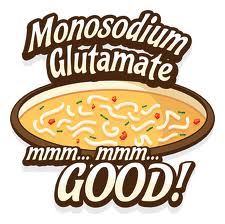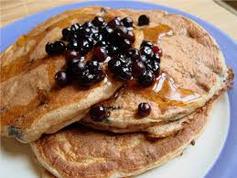When in the pursuit of a healthy body, protein, carbohydrates and fats are all important macro-nutrients to consider but all the calorie counting and portion sizing are useless unless you are actual digesting your food properly. I do numerous nutritional intakes and one of the most common things I come across is symptoms of an under-active stomach, this usually isn't an issue with young people (but they are not reading this).
As we age our production of HCL (hydrochloric acid) decreases, as does our digestion in general. If you are concerned about body image and muscle mass you should be concerned about HCL. Why? This is because protein digestion starts in the stomach and it makes no difference how much of that stuff you shove down your gob if you are not breaking it down. You must be extracting the amino acids you need to build muscles, support immune function and create neurotransmitters or else you are destined for a weak body, both when it comes to physical capacity and immunity as well as a plethora of mental issues that include the all too common depression.
So what to do? Ingesting lemon juice and/or apple cider vinegar prior to meals wakes the digestive system up and also alkalizes the body as an added bonus, but here comes the money shot are you ready for it? Chew your food 20-30 times and assure that what goes down your throat is thoroughly masticated. Did I lose you? Did you wanted some fancy enzyme or trick that was going to appear on Dr.Oz next week? Well that’s not going to happen because they are no dollars to be made here. When we chew our food numerous times we allow for pre-digestion in our mouth, and it also warms up that big old tank of a stomach for the protein. Do you know that no carbohydrate or fat digestion takes place in the stomach? Well it’s true, so by chewing you are at least allowing salivary enzymes a chance to help you out.
For you horror buffs, think of this! If you are trying to dissolve a body and you put it in acid (your stomach) it's going to go faster in small pieces. Now that's just gross but the food you eat and your stomach are the same so you have to chew that crap. Start digesting and you will benefit from the nutrients. Too many people have now become ducks and take a bite and swallow, that’s just another problem with our fast paced world. Food is our fuel and supports everything we do yet we treat it like a red headed step-child. If you want to function well eat slowly, eat methodically and stop eating in the car or on the run.
I challenge you all to try and count to 20 chews before swallowing, believe me it’s harder then it sounds but can benefit you more than you can imagine.
EXTRA CREDIT- The art of chewing stimulates the parasympathetic system (the one responsible for relaxation and repair) could you benefit from any of that?
Tags- Calgary Personal Trainer, Calgary Personal Training, Nutrition, Precision Fitness and Nutrtion, Fitness, Health, weight loss
As we age our production of HCL (hydrochloric acid) decreases, as does our digestion in general. If you are concerned about body image and muscle mass you should be concerned about HCL. Why? This is because protein digestion starts in the stomach and it makes no difference how much of that stuff you shove down your gob if you are not breaking it down. You must be extracting the amino acids you need to build muscles, support immune function and create neurotransmitters or else you are destined for a weak body, both when it comes to physical capacity and immunity as well as a plethora of mental issues that include the all too common depression.
So what to do? Ingesting lemon juice and/or apple cider vinegar prior to meals wakes the digestive system up and also alkalizes the body as an added bonus, but here comes the money shot are you ready for it? Chew your food 20-30 times and assure that what goes down your throat is thoroughly masticated. Did I lose you? Did you wanted some fancy enzyme or trick that was going to appear on Dr.Oz next week? Well that’s not going to happen because they are no dollars to be made here. When we chew our food numerous times we allow for pre-digestion in our mouth, and it also warms up that big old tank of a stomach for the protein. Do you know that no carbohydrate or fat digestion takes place in the stomach? Well it’s true, so by chewing you are at least allowing salivary enzymes a chance to help you out.
For you horror buffs, think of this! If you are trying to dissolve a body and you put it in acid (your stomach) it's going to go faster in small pieces. Now that's just gross but the food you eat and your stomach are the same so you have to chew that crap. Start digesting and you will benefit from the nutrients. Too many people have now become ducks and take a bite and swallow, that’s just another problem with our fast paced world. Food is our fuel and supports everything we do yet we treat it like a red headed step-child. If you want to function well eat slowly, eat methodically and stop eating in the car or on the run.
I challenge you all to try and count to 20 chews before swallowing, believe me it’s harder then it sounds but can benefit you more than you can imagine.
EXTRA CREDIT- The art of chewing stimulates the parasympathetic system (the one responsible for relaxation and repair) could you benefit from any of that?
Tags- Calgary Personal Trainer, Calgary Personal Training, Nutrition, Precision Fitness and Nutrtion, Fitness, Health, weight loss





 RSS Feed
RSS Feed
